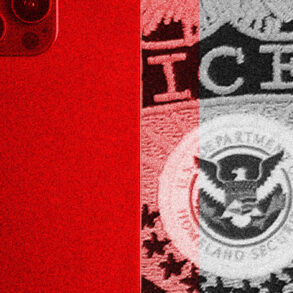With tensions between the United States and Iran at a boiling point following recent military strikes on Iranian nuclear sites, officials and security experts are raising serious concerns about the presence of Iranian sleeper cells on American soil. These warnings suggest that hidden operatives may already be embedded within U.S. communities, quietly waiting for the order to attack.
What Is a Sleeper Cell?
Sleeper cells are covert groups of terrorists or spies who live undetected in a foreign country, often for years. They appear to be ordinary residents, working regular jobs, raising families, and blending in. But their real purpose remains hidden until they are activated—usually in response to a geopolitical event or a direct order from their sponsoring regime.
The concept gained widespread attention after the September 11 attacks, when it was revealed that the 9/11 hijackers had spent months inside the U.S., preparing while living seemingly normal lives. According to The Independent, these sleeper agents “live quiet and unassuming lives in America until they are called to act against the U.S.”
Why Would Iran Have Sleeper Cells in America?
Iran has a long history of using proxy groups and covert operatives to carry out attacks against its enemies. Hezbollah, the Lebanese militant organization backed by Iran and designated as a terrorist group by the U.S., is believed to be central to Iran’s foreign operations. Intelligence officials have warned that Iran could activate such networks in response to U.S. actions.
Following the June 22 U.S. airstrikes that struck major Iranian nuclear facilities at Natanz, Fordow, and Isfahan, Iran vowed revenge. These strikes, part of what President Trump called the “Midnight Hammer” operation, were described as having “totally obliterated” Iran’s nuclear sites. In the aftermath, the Department of Homeland Security issued a bulletin stating, “The likelihood of violent extremists in the Homeland independently mobilizing to violence… would likely increase if Iranian leadership issued a religious ruling calling for retaliatory violence.”
Barak Seener, a senior fellow at the Henry Jackson Society, explained the danger more bluntly. “As the conflict in the Middle East escalates and Iran is being targeted, the regime thinks to itself, ‘OK, we are on our last throes, and therefore we will go out with a bang, quite literally.’”
How Could Iranian Operatives Get In?
Former FBI special agent Jonathan Gilliam has warned that current border and immigration policies have created the perfect environment for hostile actors to enter the U.S. and remain undetected. In an interview with Fox News Digital, Gilliam said, “Where these sleeper cells may be is in plain sight. And that’s the real terrifying part of this.” He added, “Putting people in place, as we’ve seen over the past four years, everyone’s scrambling because certain amounts of people could come in here and get in here.”
Gilliam criticized the Biden administration for allowing potential Iranian operatives to enter the U.S. by claiming asylum. “They could even go to the border and say they [want to] seek asylum,” he said. “And the Biden administration, instead of putting them into DHS housing or ICE housing and holding them there… lets them in.”
Since the June 22 airstrikes, U.S. Immigration and Customs Enforcement (ICE) has increased enforcement targeting Iranian nationals. According to multiple federal sources, over 130 Iranians have been arrested, and 670 are currently in ICE custody.
While many Americans might expect major cities like New York or Washington, D.C. to be the primary targets, experts warn that rural areas could actually be more vulnerable. “There is a possibility that sleeper cells could target more rural states instead of a large city,” said Gilliam. He pointed to recent attacks in Israel and India as examples of how militant groups are shifting tactics to strike places with less security.
Gilliam said, “It is possible that a similar attack could happen at a rural, outdoor entertainment venue or populated vacation spot.”
Following the strikes, U.S. law enforcement and intelligence agencies have increased their monitoring of suspected Iranian operatives. The FBI, Department of Homeland Security, and United States Central Command are all involved in identifying and tracking potential threats. FBI Director Kash Patel reportedly intensified surveillance of individuals linked to Hezbollah even before the U.S. joined the Israeli-led strikes on Iran.
Current and former officials say these efforts are not new. After President Trump ordered the 2020 assassination of Qasem Soleimani, Iran’s top military commander, U.S. intelligence agencies began watching for retaliatory activity. Since then, prosecutors have charged several individuals in the U.S. with plotting to kill both Trump and his former national security adviser, John Bolton.
A DHS threat assessment recently concluded, “Iran also will continue to directly threaten U.S. persons globally and remains committed to its decade-long effort to develop surrogate networks inside the United States.”
Concerns about sleeper cells are not limited to government officials. Conservative voices across social media have sounded the alarm, though not all their claims are backed by evidence.
Laura Loomer, a vocal Trump supporter, wrote on X (formerly Twitter), “Iran has many sleeper cells in the US. Iranian proxies from HAMAS and Hezbollah will likely retaliate on US soil to kill Americans in acts of Islamic terror.” She warned Americans to avoid crowded public events, particularly in Washington, D.C.
Charlie Kirk, founder of Turning Point USA, posted, “Keep your head on a swivel. Biden let millions of people into America. Iran might activate some sleeper cells against Americans.” He ended his post by encouraging citizens to “stay armed.”
Others, like conservative activist Jack Posobiec, claimed, “FBI reportedly mobilizing counter-terrorism task forces on alert status for potential Iran sleeper cell activity.”
Though no specific threats have been confirmed publicly, the fear has become widespread enough to influence public behavior, particularly in the wake of parades and political demonstrations.
Iran’s foreign minister has called the U.S. airstrikes “unforgivable,” and the Iranian government has vowed retaliation. Secretary of State Marco Rubio has warned Iran not to act, saying on Fox Business, “Any such action against the U.S. or its interests would be the worst mistake they’ve ever made.”
While the true risk of sleeper cell attacks remains uncertain, security experts say the threat is real and growing. With both intelligence agencies and public commentators on high alert, the focus has shifted to finding out whether these covert cells are already here—and what might happen if they are activated.
In the words of Jonathan Gilliam, “This isn’t paranoia. This is reality. They’re not coming. They’re already here.








